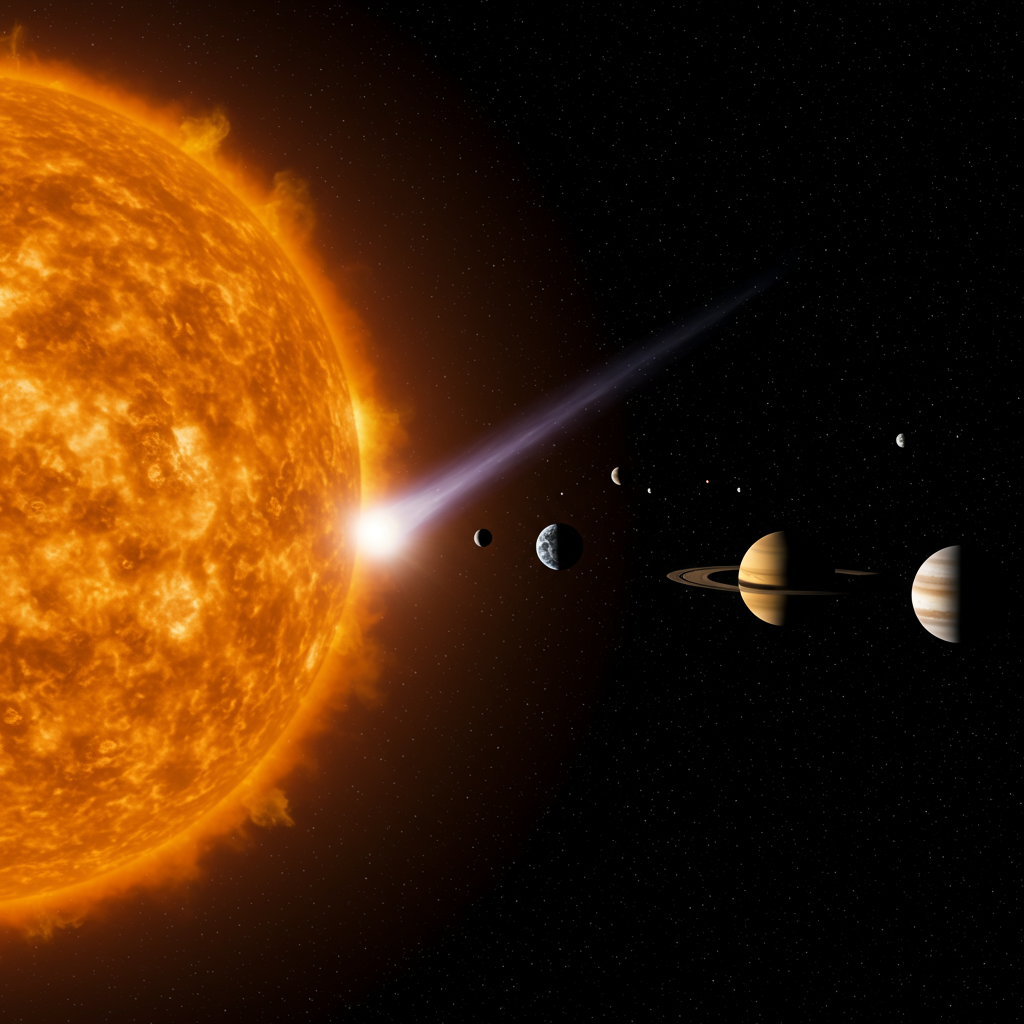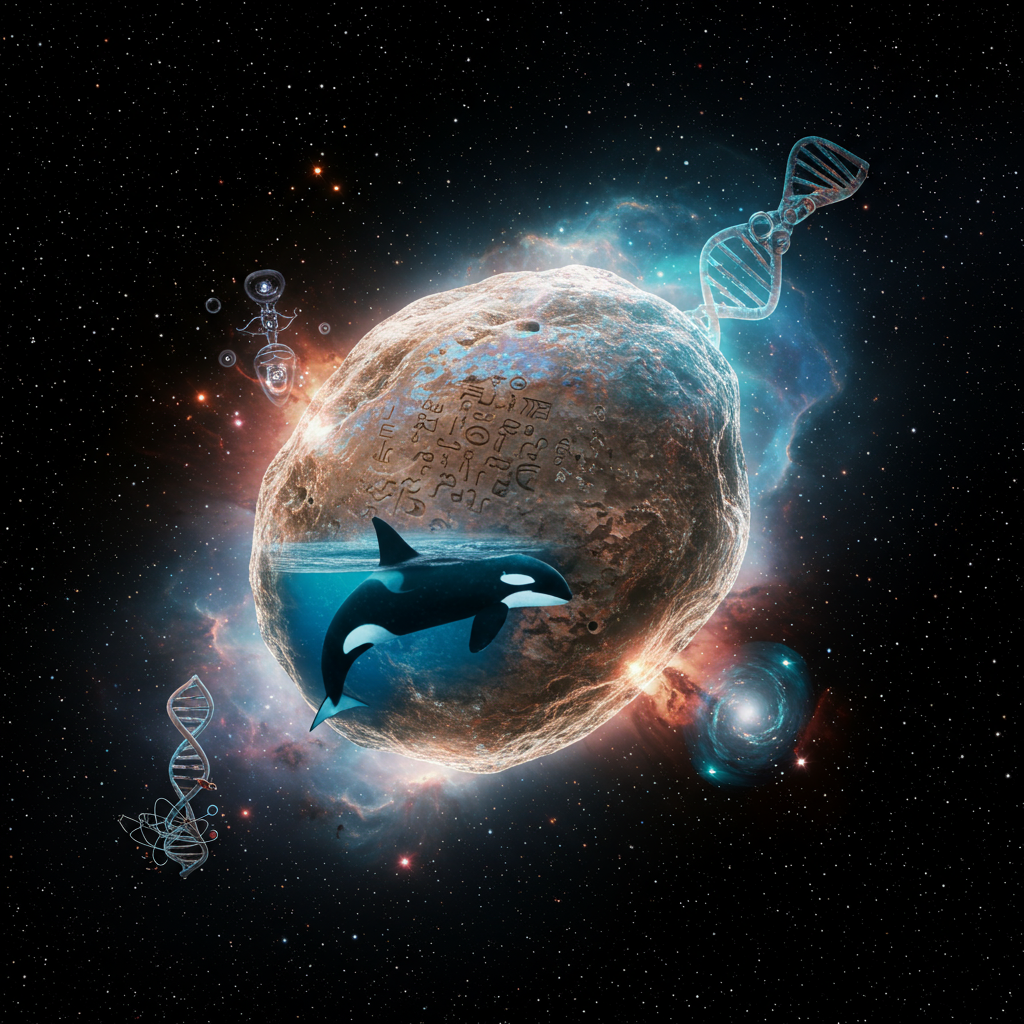Imagine a traveler arriving at your doorstep, not just from another state or country, but from an entirely different world you never knew existed. That’s essentially what happened in our cosmic neighborhood on July 1, 2025. Scientists detected a new celestial visitor hurtling through our solar system. Within hours, its incredible speed and unusual trajectory made one thing clear: This object isn’t from around here.
It’s only the third confirmed object humanity has ever spotted journeying through our solar system after originating from another star system. Its arrival presents an unprecedented opportunity. For months to come, astronomers worldwide will point their most powerful telescopes at this interstellar interloper, hoping to unlock secrets about its distant home and the vast, uncharted reaches of our Milky Way galaxy. What is this enigmatic visitor, and what can it teach us?
Detecting a Stranger From Another Star
The first hint of this cosmic arrival came from the Asteroid Terrestrial-impact Last Alert System (ATLAS). This network of NASA-funded telescopes constantly surveys the sky for potentially hazardous objects. On July 1, 2025, one of the ATLAS telescopes in Chile spotted something unusual in the shadow of Jupiter. Initial observations didn’t immediately flag it as unique. However, as more astronomers using other telescopes glimpsed the object and calculated its path, its extraordinary nature became obvious.
Unlike asteroids and comets that orbit our sun, this object was moving too fast and on a trajectory too steep to be gravitationally bound to our star. Its path wasn’t a closed loop like the orbits of planets or typical comets; it was a hyperbolic path, heading straight through our system and then back out into the darkness of interstellar space, never to return. This undeniable evidence confirmed its origin lay far beyond our sun’s influence, in another star system entirely.
The International Astronomical Union officially designated it 3I/ATLAS. The “I” stands for interstellar, and “3” signifies that it is just the third confirmed object of its kind. “ATLAS” credits the team that discovered it. This seemingly simple name carries immense scientific weight, confirming a visitor from a star system potentially millions or billions of years away.
Meet the Third Interstellar Voyager
The first interstellar visitor, named ‘Oumuamua, baffled scientists after its 2017 discovery. It had a strange, elongated shape and behaved unusually, showing no clear cometary activity. Because it was detected as it was already leaving, astronomers had limited time to study it, leading to much speculation about its nature. Then came 2I/Borisov in 2019, which looked and acted much more like a typical comet. It displayed a clear coma – a hazy cloud of gas and dust surrounding its nucleus – formed by melting ice.
Now, 3I/ATLAS adds a crucial third data point. Based on initial observations, it appears to be much more like 2I/Borisov. Scientists have already detected a coma around 3I/ATLAS, confirming its cometary nature. This fuzzy envelope forms as the sun’s warmth vaporizes the ice within the object’s nucleus. The presence of this coma suggests 3I/ATLAS is largely composed of ice, similar to the comets found in our own solar system.
Estimating the precise size of its solid nucleus is challenging because the bright coma obscures the view. However, based on how much sunlight is reflecting off the object and its surrounding cloud, astronomers estimate its rocky, icy core could be anywhere from 6 to 15 miles long. If this estimate holds true, 3I/ATLAS would be significantly larger than both ‘Oumuamua (about a quarter-mile long) and 2I/Borisov (about two-thirds of a mile long), potentially making it the largest interstellar visitor detected to date. Its slightly reddish hue hints that it might be made of primordial material, offering a glimpse into the conditions present during the formation of its home planetary system.
A Journey Through Our Corner of Space
Discovered around 420 million miles from Earth, 3I/ATLAS is now on a temporary journey through the inner solar system. Its path is carrying it inwards towards the sun. Its closest approach to our star is predicted for late October 2025. At that time, it will be about 130 million miles from the sun, just inside the orbit of Mars.
Crucially for scientists, 3I/ATLAS is passing within 18 million miles of Mars in early October 2025. This proximity offers an exciting possibility: Could spacecraft currently orbiting the Red Planet turn their cameras towards this visitor? Such observations might provide unique data on its chemistry and physical features from a relatively close distance, offering insights that ground-based telescopes cannot.
As 3I/ATLAS dives closer to the sun, the increasing heat will cause more of its ice to vaporize. This process will likely expand its coma and could potentially cause it to develop a visible tail of gas and dust stretching millions of miles into space. Astronomers expect to see its cometary activity significantly increase in the coming weeks and months as it makes its closest solar pass.
Unlocking its Ancient Secrets
Detecting an interstellar object entering the solar system is a stroke of luck. Unlike ‘Oumuamua, which was spotted on its way out, astronomers have several months to study 3I/ATLAS as it travels inwards and then begins its journey back out. This extended observation window is invaluable. Observatories around the world and even in space are expected to focus their attention on tracking and analyzing this unique visitor.
Astronomers hope to determine its precise composition, including the types of ice and rocky materials it contains. Understanding what it’s made of can reveal clues about the conditions under which it formed in its distant star system. Was it born in a system similar to our own, or one vastly different? Is it a leftover building block from planet formation, or perhaps a shard from a collision between forming worlds?
Instruments like the Vera C. Rubin Observatory, which is expected to begin comprehensive sky surveys soon, are designed to find dimmer, more distant objects and could dramatically increase the rate of interstellar object discoveries in the future. For now, 3I/ATLAS provides a rare, tangible sample from another stellar neighborhood.
The study of these rare visitors is paramount. As astronomer Sarah Greenstreet notes, the more we learn about interstellar objects, the better we can understand how similar or different our own solar system is compared to the countless others spread across the Milky Way. They are cosmic time capsules, potentially carrying information about the early universe and the processes that build planets elsewhere.
No Threat to Earth
Despite its high speed – estimated at over 37 miles per second relative to the sun – and trajectory deep into the solar system, 3I/ATLAS poses absolutely no danger to our planet. NASA calculations confirm that the comet’s closest approach to Earth will occur in December 2025, as it travels back out of the solar system. Even then, it is expected to remain at a safe distance of at least 150 million miles, far outside Earth’s orbit. Its trajectory will not intersect with our planet.
While currently too faint to be seen without a powerful telescope, 3I/ATLAS is expected to brighten as it gets closer to the sun and its cometary activity increases. Professional observatories and potentially even large amateur telescopes might capture images and data from late 2025 into early 2026 as it continues its journey away from the sun.
Frequently Asked Questions
What is 3I/ATLAS and why is it called an interstellar object?
3I/ATLAS is a newly discovered celestial object that originated from outside our solar system. It’s classified as an interstellar object because its speed and trajectory show it’s not orbiting our sun but is merely passing through. The “3I” designation means it’s the third confirmed interstellar object detected by humans. Observations show it has a coma, meaning it’s a comet made mostly of ice, likely formed in another star system and ejected into interstellar space millions or billions of years ago.
Can I see the interstellar comet 3I/ATLAS?
Currently, 3I/ATLAS is too faint and requires professional telescopes to be seen. It’s located in the southern sky towards the constellation Sagittarius. As it approaches the sun, it is expected to brighten. While not anticipated to be visible to the naked eye, it might become observable with reasonably sized amateur telescopes in late 2025 and early 2026 as it moves away from the sun. Keep an eye on astronomy news for potential viewing opportunities or live feeds from observatories.
Why is finding interstellar objects like 3I/ATLAS important to scientists?
Finding interstellar objects provides a unique opportunity to study material from outside our solar system directly. They are thought to be remnants from planet formation in other star systems. By analyzing their composition, structure, and behavior, astronomers can gain insights into how planetary systems form elsewhere in the Milky Way and compare them to our own. These objects act as messengers, carrying clues about distant cosmic environments.
What’s Next?
With 3I/ATLAS now confirmed and its trajectory mapped, the focus shifts to intensive observation. Astronomers have a valuable window of several months to gather as much data as possible before the object fades into the vastness of interstellar space once more. Every observation, from ground-based telescopes to potentially space-based instruments and Mars orbiters, will add another piece to the puzzle of this ancient visitor. Each detail learned about 3I/ATLAS brings us closer to understanding the incredible diversity of planetary systems beyond our own. Its passage reminds us that our solar system is just one tiny corner in a dynamic and interconnected galaxy, constantly visited by wanderers from distant stellar shores.




